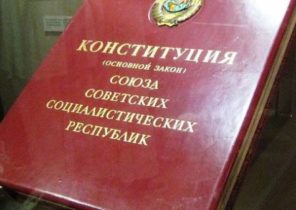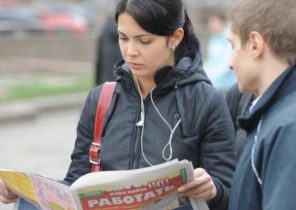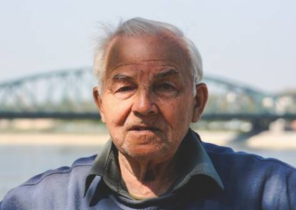Last month, the heads of governments of the Eurasian economic Union for the first time since the announcement of the pandemic coronavirus have left their bunkers to come to the first meeting face to face.
In this regard, of course, that the spread covid-19 was a key agenda item at the meeting in Minsk on 17 July, where the Prime Ministers of member countries agreed on a joint action plan to contain the coronavirus. But the truth is, the only thing that the membership is able to sync is a statistic about their equally questionable success in the fight against the pandemic.
President of Belarus Alexander Lukashenko even said that he had contracted the coronavirus, although the disease he supposedly was asymptomatic. He’s a little behind other regional leaders. Prime Minister of Armenia Nikol Pashinian and former President of Kazakhstan Nursultan Nazarbayev announced about the discovery they covid-19 in June (the first, incidentally, also had asymptomatic).
The summit had other things to do: Prime Ministers took another two roadmaps dealing respectively with agriculture and industrialization of the EEU.
A joint plan for the development of agro-industry looks extremely impressive compared to what was adopted in the European Union. It is actually a list of individual or joint projects. One of the stated goals of such planning was to prevent “duplication of proceedings”. Later, probably members of the bloc are waiting for awkward conversations when they are to decide who gets what.
Also, the plan calls for extending to the entire region measures on import substitution. For many years, Russia for geopolitical reasons, the right and left have introduced bans on food imports — to piss off Western partners or help their own underdeveloped agricultural sector. But is this model realistic or acceptable to other countries of the EEU is an open question.
The philosophy of import substitution is even more vividly presented in the roadmap of industrialization of the EEU. This document consists of three sections. In the first listed 178 “major projects” in 18 industries, which will require investments in the amount of about $ 200 billion. As stated at the Eurasian economic Commission (EEC), the Executive body of the EAEC, the aim of coordination of these projects, the EEU is also avoiding duplication. The second, slightly softer section of the roadmap provides support to hundreds of small and medium technology companies with the aim of creating finely tuned production chain across the block, too, by the way, with the aim of eliminating dependence on technological imports. In the third section, it is also very vague, saying the measures to reduce the need to import goods to the EAEU.
Addressing issues relating to pandemic coronavirus and the development of agriculture and industry, involves very different time frame, but in some places they intersect. The rest of the world, the EEU was faced with a crisis of unemployment. According to UNECE, as of the end of July in the block as unemployed was registered about 3.1 million people. This is almost three times more than the year before, and also this number is almost certainly very low. Most acutely the question is in Armenia, where the unemployment rate at the end of last year was 17.9 percent. But, again, it is likely that those responsible for statistics in Yerevan give more reliable figures than their counterparts in Kyrgyzstan, which is also experiencing economic difficulties, but in 2018, reported a relatively low unemployment rate of 6.2 percent.
The phrase “barriers, exceptions and limitations” — repeated mantra in discussions of the EEU on the easing of conditions for trade within the block. Regarding the first of these words — barriers, we are talking about the input members of the unilateral rules, which are agreed contradict the legislation of the EEU, suggesting free movement within the block of goods, services, capital and labour.
Published in 2016, report EES are some examples. In particular, Belarus has imposed a reduced rate of sales tax on certain goods produced within the country, but this rule did not apply to goods imported from other member States of the bloc. Another still relevant example is the situation on the Kazakh-Kyrgyz border, where the authorities of Kazakhstan are subjected imported from Russia goods compulsory phytosanitary inspection.
The Chairman of the UES Mikhail Myasnikovich said at the closing of the summit of the Prime Ministers that on this front, significant progress has been made. “On the lips of everyone is a lot of dialogue about barriers, he said. — This year alone, we eliminated nine of the 15 barriers. However, little has grown and new. But, in principle, there is an understanding that the obstacles that are generated in the domestic market, it is necessary to solve quickly enough.”
Meanwhile, his compatriot Lukashenko during a conversation in Minsk with Prime Minister of Armenia gave a less optimistic assessment: “we Have enough barriers, interstate borders, we have brought in connection with the barriers to such an extent that the business often says: you really set the border between the States, it will be easier and easier.”
In General, the EEC sends conflicting signals about protectionism within the block. Just a few days before the summit in Minsk Prime Minister announced the establishment of a Committee under his chairmanship, the aim of which is to develop roadmaps for the resolution of disputes that arise constantly. In the EEU, seem to believe that there is no such problem that cannot be solved by adopting a regular road map.
This is enough to a person wanted a drink or two. But what to drink?
Alcohol is one of the most pressing issues in the EEU. And the main source of problems is Russia, with its costly certification procedure.
The negotiations regarding the elimination of protectionist barriers in the way alcoholic products are drawn from the time before the formation of the EEU. In this regard, coordinated with all parties to the document regarding the harmonization of the requirements entitled “On safety of alcoholic beverages”, which will take effect next year, would be considered a breakthrough. But, as written by Ilya Zakharkin published in your July 30 article, the effect of the adoption of this document may be limited because Russia continues to create new obstacles.
According to the new Russian law, enacted in June, only the winemakers who produce products exclusively from local ingredients, you can sell it as “Russian wine”. Beverages containing any ingredients that were produced outside of Russia, must be labeled as “grape drink”, which eliminates blending with wines produced in member countries the EEU, and is a clear violation of the rules of the unit, said Zakharkin.







